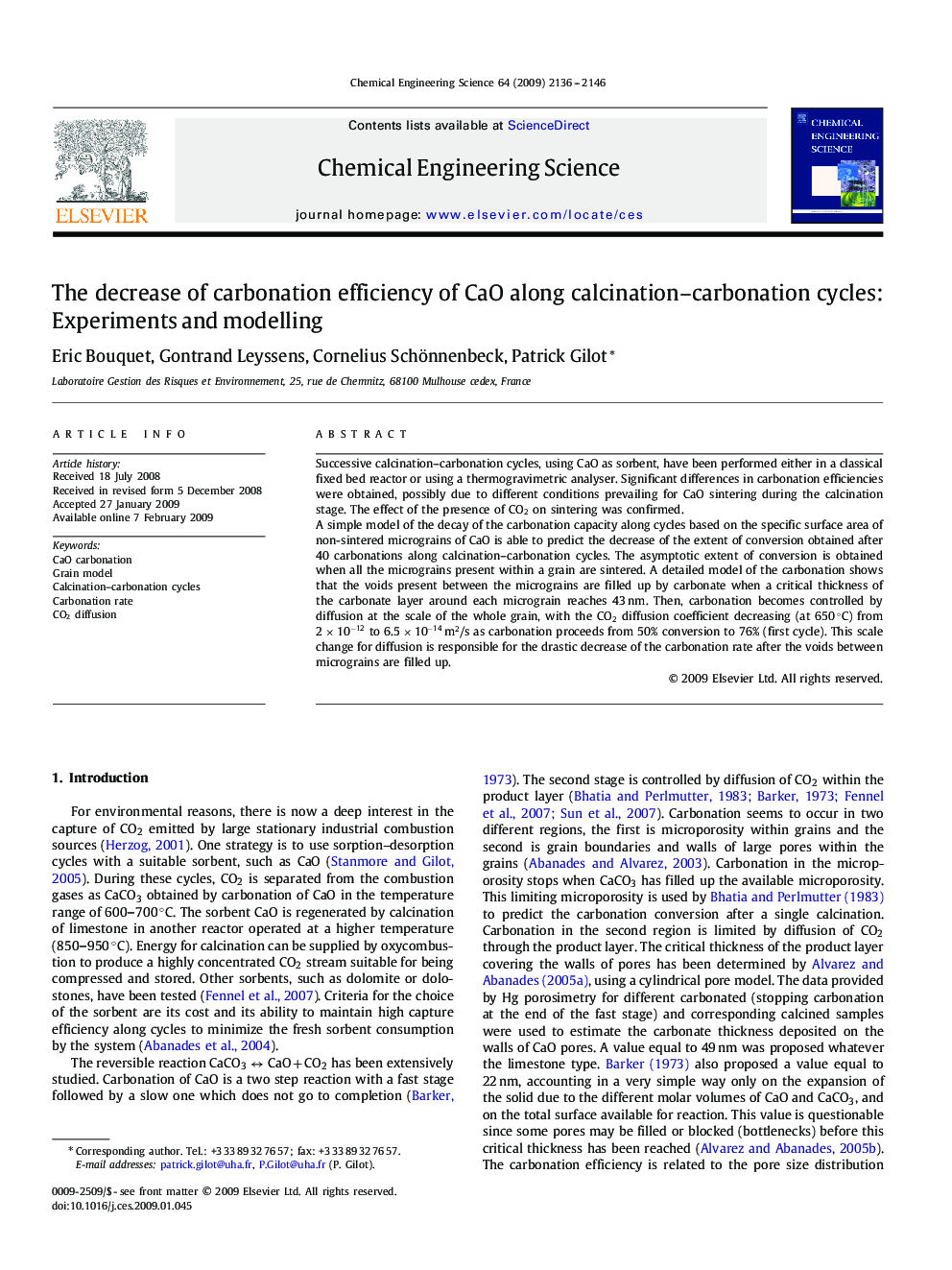| کد مقاله | کد نشریه | سال انتشار | مقاله انگلیسی | نسخه تمام متن |
|---|---|---|---|---|
| 157300 | 456968 | 2009 | 11 صفحه PDF | دانلود رایگان |

Successive calcination–carbonation cycles, using CaO as sorbent, have been performed either in a classical fixed bed reactor or using a thermogravimetric analyser. Significant differences in carbonation efficiencies were obtained, possibly due to different conditions prevailing for CaO sintering during the calcination stage. The effect of the presence of CO2CO2 on sintering was confirmed.A simple model of the decay of the carbonation capacity along cycles based on the specific surface area of non-sintered micrograins of CaO is able to predict the decrease of the extent of conversion obtained after 40 carbonations along calcination–carbonation cycles. The asymptotic extent of conversion is obtained when all the micrograins present within a grain are sintered. A detailed model of the carbonation shows that the voids present between the micrograins are filled up by carbonate when a critical thickness of the carbonate layer around each micrograin reaches 43 nm. Then, carbonation becomes controlled by diffusion at the scale of the whole grain, with the CO2CO2 diffusion coefficient decreasing (at 650∘C) from 2×10-122×10-12 to 6.5×10-14m2/s as carbonation proceeds from 50% conversion to 76% (first cycle). This scale change for diffusion is responsible for the drastic decrease of the carbonation rate after the voids between micrograins are filled up.
Journal: Chemical Engineering Science - Volume 64, Issue 9, 1 May 2009, Pages 2136–2146